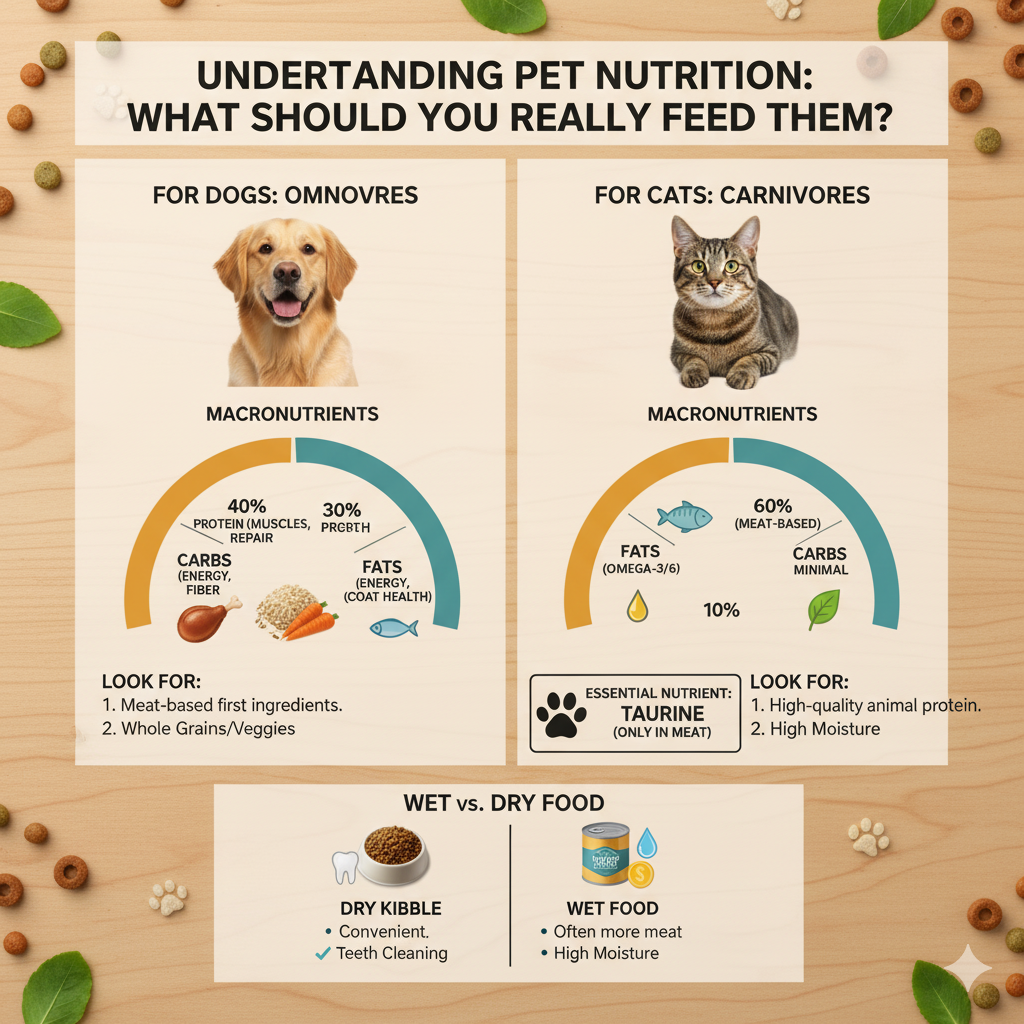
Understanding Pet Nutrition: What Should You Really Feed Them?
You can understand how perplexing the pet food aisle can be if you’ve ever been there. With claims of “human-grade” ingredients and “grain-free” recipes, the bags and cans have you wondering what exactly my pet needs to eat to keep healthy. Since nutrition is the cornerstone of your pet’s vitality, coat health, and longevity, selecting the appropriate food is one of the most crucial decisions you will ever make as their owner. Giving them the proper food for their particular biology is more important than simply filling their dish.
Cracking the Code of Nutrition
First and foremost, there are basic dietary distinctions between dogs and cats. Since dogs are omnivores, their bodies are made to process and use nutrients from a variety of plant and animal sources. A diet rich in meat, vegetables, and grains (or other carbohydrates) is ideal for them. Cats, however, are carnivores by nature. They must therefore consume meat in order to live. Taurine, which is only present in animal tissues, is one of the particular nutrients they need but are unable to produce on their own. Thus, the main focus of your cat’s food should always be high-quality animal protein.
When reading a food label, try to focus on the ingredient list and avoid the fancy marketing jargon. One or two of the first ingredients for both dogs and cats should be a labeled animal protein source, like “chicken meal,” “deboned salmon,” or “beef.” A grain or vegetable at the top of the list might not have enough high-quality protein to maintain your pet’s wellness.
What Macronutrients Do
Although the proportions are different, pets require a balance of protein, lipids, and carbohydrates just like people do.
The development of muscles, tissue repair, and immunological function all depend on protein. Choose a diet that contains a lot of meat-based protein. Cats should pay particular attention to this. Fats: Often overlooked, fats are necessary! They give out concentrated energy, aid in the absorption of specific vitamins (such as A, D, E, and K), and are essential for keeping the skin and coat healthy and lustrous. The fatty acids omega-3 and omega-6 are good fats.
Dogs’ carbohydrate needs include fiber, vitamins, and energy from grains, vegetables, and legumes. A small amount of carbs is totally healthy and provides the required fuel for a dog’s diet, even if high-quality protein is crucial.
Food: Is There a Winner Between Wet and Dry?
Personal preference and health requirements are often at the center of the wet vs. dry meal dispute.
Convenient, affordable, and preventing tartar development by crunching, dry kibble keeps teeth cleaner.
Wet food frequently contains more meat and, more importantly, a lot more water. Cats can benefit from the additional hydration for renal health, especially since they frequently don’t drink enough water.
The optimum balance, according to many pet owners, is to use dry kibble as the primary food and add fresh ingredients or wet food for extra hydration and visual appeal.
You must be a conscientious shopper when it comes to selecting the best food for your pet. For help interpreting labels and suggesting a diet that is appropriate for your pet’s age, breed, weight, and any particular medical conditions, consult your veterinarian.
